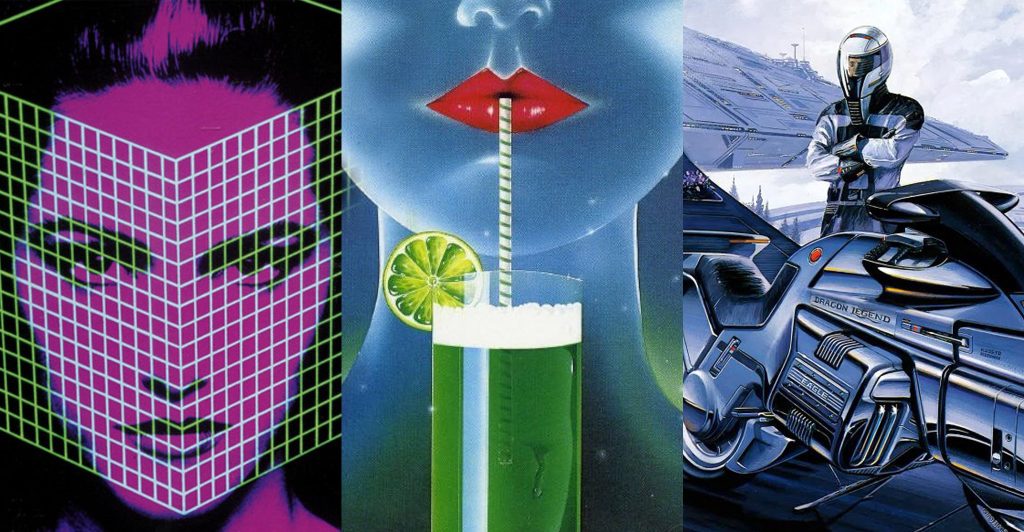
Italo disco is a genre that has left an indelible mark on electronic music, from synth pop and house in the 1980s, through to synthwave and cosmic disco in recent years. Oblivion Sound Lab’s latest soundset, Paradiso, pays tribute to the Italo sound, its influences and offshoots. To accompany its release, here is an overview of some of the most influential and iconic Italo and space disco tracks.
Space “Magic Fly” (1977)
The short-lived space disco genre was a precursor to Italo, and is exemplified by French group Space’s hit single “Magic Fly”, which went to No. 2 in the UK in 1977. More recently, a version of “Magic Fly” was heard during the Paris 2024 Olympic opening ceremony.
Giorgio Moroder “Chase” (1978)
Composed by Giorgio Moroder and Harold Faltermeyer for the soundtrack of the film Midnight Express, “Chase” is an excellent example of the hi-NRG genre that Moroder helped to pioneer. Moroder’s music, with its pulsating octave baselines, was a massive influence on Italo disco.
La Bionda “I Wanna Be Your Lover” (1980)
La Bionda were an Italian duo consisting of brothers Carmelo and Michelangelo La Bionda. They started out as a traditional disco band, but by the 1980s had begun to incorporate synthesizers into their sound, as on this space-themed Italo classic.
Kano “I’m Ready” (1980)
Funk and electro meet disco in the debut single from Kano, one of the earliest and best known Italo disco groups. Kano’s tracks have been sampled by the likes of Kavinsky and Felix da Housescat.
Klein and M.B.O. “Dirty Talk” (1982)
The debut track by Klein and M.B.O. made a big impact on the Chicago house scene, and also paved the way for New Order’s “Blue Monday”, which borrows the track’s arrangement.
Mr. Flagio “Take a Chance” (1983)
Considered by some to be the greatest Italo track ever. A vocoder-drenched robot and disco diva trade vocal duties over cosmic synthesiser chords and a relentless bass pulse.
B.W.H. “Stop” (1983)
Italian producer Stefano Zito and his wife Helene only released a couple of tracks under the name B.W.H., one of which was “Stop”. Its phased bassline, funky vibrato chords and piano hook make this track one of the genre’s classics.
Lime “Angel Eyes” (1983)
An example of how Italo crossed geographical and musical borders. Angel Eyes was recorded by Canadian duo Lime, and found an audience on US dancefloors where the house scene was taking root.
Charlie “Spacer Woman” (1983)
Another genre-exploding Italo track from 1983, “Spacer Woman” was electroclash 15 years before electroclash even existed.
Scotch “Disco Band” (1984)
Of all the gems that I unearthed while researching for Paradiso, this television studio performance of Scotch’s “Disco Band” is undoubtedly the oddest. Vince Lancini’s troll dance exemplifies the playful charm of Italo disco.
Clio “Faces” (1985)
“Faces” is Italo disco at its most glossy. Rumour has it that Roberto Ferrante played all of the synthesizer parts using only a Korg Polysix.
Cyber People “Void Vision” (1985)
Along with Koto and Laserdance, Giorgio Spagna’s Cyber People project is an excellent example of spacesynth, an Italo sub-genre that emerged in the mid 1980s and is characterised by upbeat instrumental tracks with futuristic themes.
Koto “Visitors” (1985)
“Visitors” is one of the earliest spacesynth songs, easily recognisable by a sample of Vincent Price’s laugh taken from Michael Jackson’s “Thriller”. Production team Anfrando Maiola and Stefano Cundari were also involved with Hipnosis, who scored a hit in 1983 with their cover of Vangelis’ “Pulstar”.
Digging deeper
Boiler Room produced the excellent short documentary Dirty Talk: A Journey into Italo Disco. It features interviews with Italo disco pioneers La Bionda, Fred Ventura, Tony Carrasco of Klein and M.B.O., alongside some of the music industry players responsible for bringing the Italo sound to an international audience.
DJ Mag have also done an in-depth piece about how the Italo disco sound has evolved over the decades, and its resurgence since the turn of the century.
